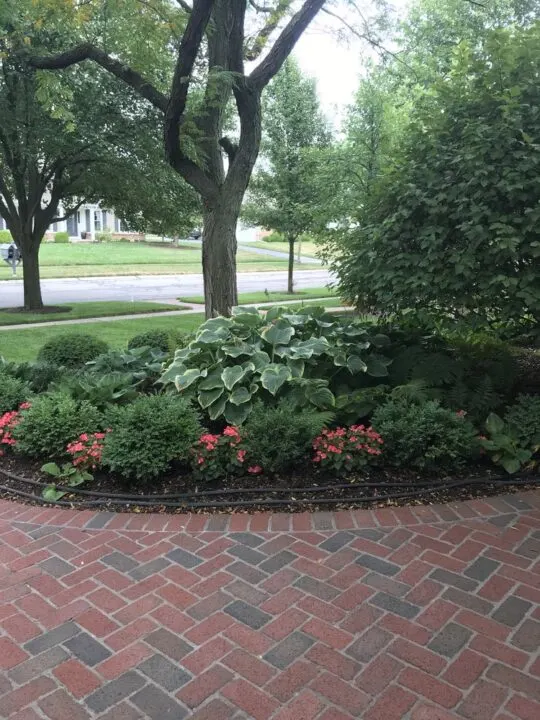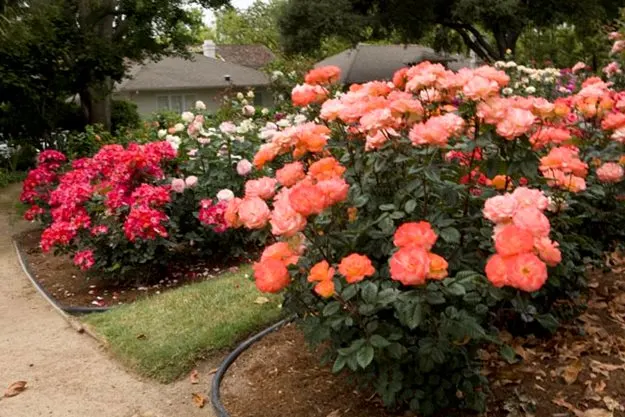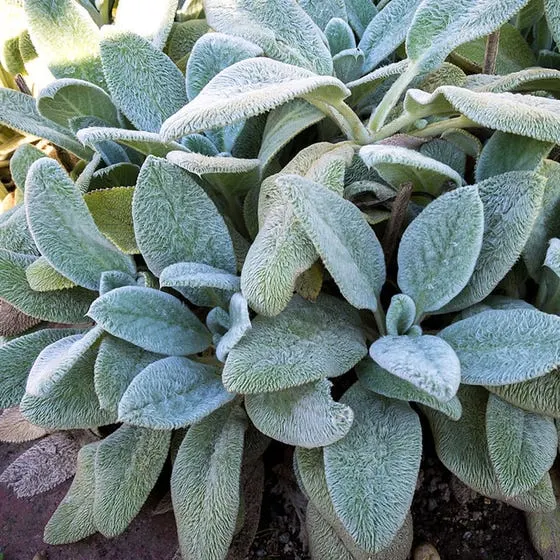Last Updated on June 28, 2023 by lindseymahoney
If you’re looking for a beautiful garden without the hassle of high maintenance plants, then low maintenance perennials are the way to go. These plants require minimal care and attention but still provide stunning blooms and foliage year after year.
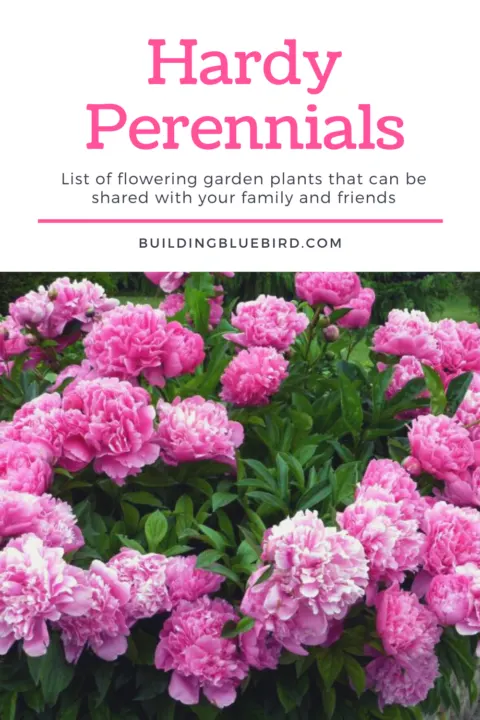
Here are 10 low maintenance perennials to consider for your garden.
10 Low Maintenance Perennials to Split & Share!
Affiliate links are included in this blog post at no additional cost to you, thanks for supporting Building Bluebird!
What is a perennial plant?
Plants that live for more than two years are considered a perennial plant. These plants return each season and do not need to be replanted every year like annuals.

I created our English garden with a minimal budget, so it was incredibly helpful to utilize low maintenance perennials shared by my friends and family!
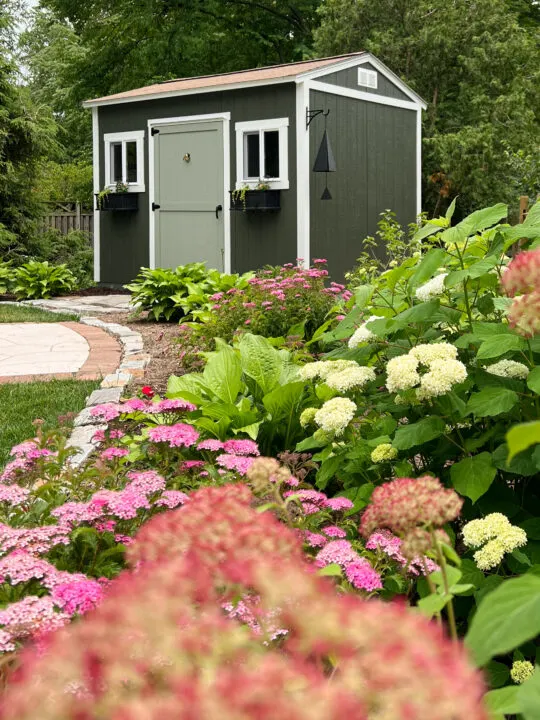
Once you start to learn what perennials are hardy and can be divided, you can save so much money by sharing with others!
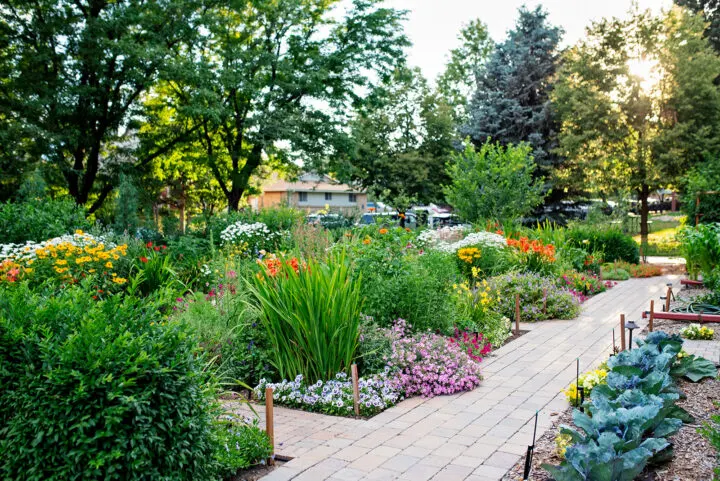
1 | Hostas
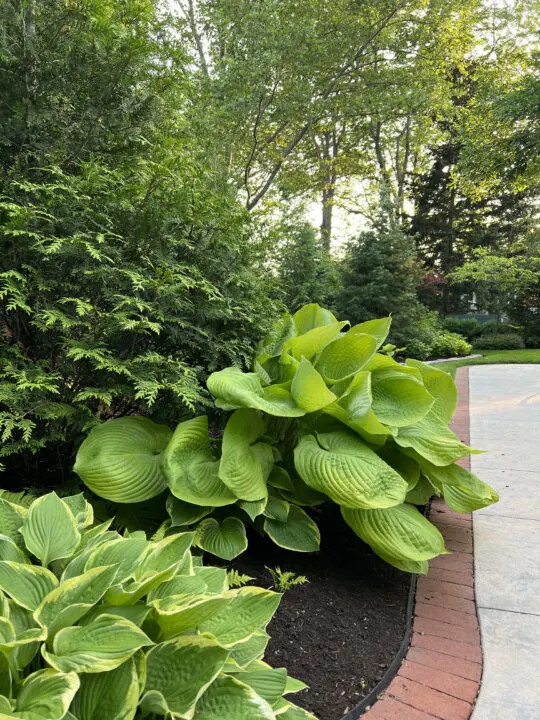
Hostas are a popular low maintenance perennial that comes in a variety of sizes and colors. They are known for their ability to thrive in shade and require little watering once established.
Hostas also require minimal pruning and can be left alone for years without any issues. They are a great choice for adding texture and color to your garden without all the fuss.
How to Divide and Transplant Hosta
This perennial plant is perfect for shady gardens. Every year it grows bigger and is a great candidate to divide into smaller plants. I enjoy sharing these plants with friends and family or using them to fill in other areas of our flower beds.
The best time to split hostas is in the spring when they begin to sprout from the ground. While this is the best practice, I have divided hosta throughout the summer and they all survived.

Once you dig up the hostas, take the point of a spade shovel and cut the plant in half. Dig a new hole about 1.5x the size of the divided hosta plant and fill the hole with water. Drop the hosta plant in the hole and fill it with soil.
Different Types of Hosta
This plant comes in a variety of colors that will add dimension to your garden without a lot of work. Here are a few of the varieties I like:
- Blue Angel Hosta – one of the largest varieties
- Royal Standard Hosta
- August Moon Hosta
- Hosta Halcyon
- Whirlwind
- Crispula Hosta
2 | Spirea
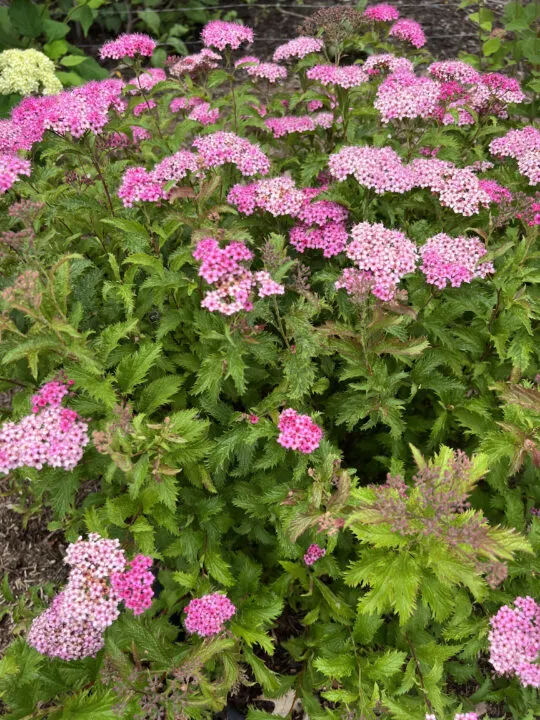
Spirea is a great low maintenance perennial for your garden. It comes in a variety of colors, including pink, white, and red, and produces clusters of small flowers in the spring and summer.
Spirea prefers full sun to partial shade and well-draining soil. It requires minimal pruning and can tolerate drought conditions once established. With its beautiful blooms and easy care, spirea is a great addition to any garden.
This is another hardy perennial plant to share with family and friends. Before transplanting any perennial, check that the soil and sunlight are ideal for that particular plant.
My neighbor shared about a dozen spirea plants and they are doing really well in our backyard.
3 | Daylilies
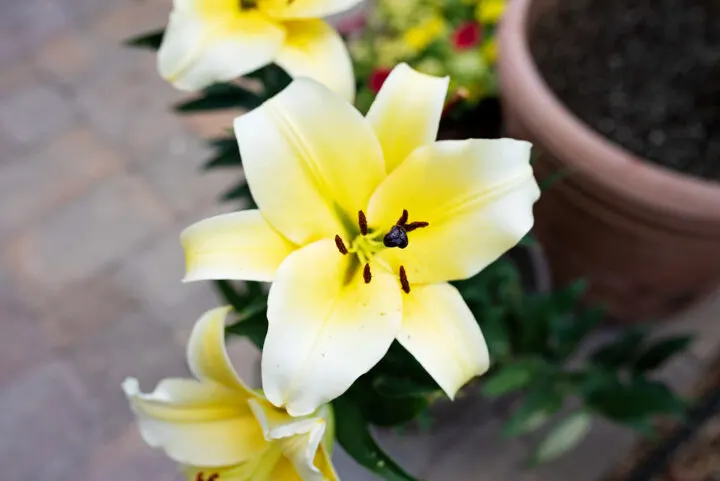
Daylilies are a classic low maintenance perennial that comes in a wide range of colors and sizes. They are known for their ability to thrive in a variety of soil types and light conditions, making them a versatile choice for any garden.
People often refer to this flower as ditch lilies because they can literally grow anywhere, including a ditch!
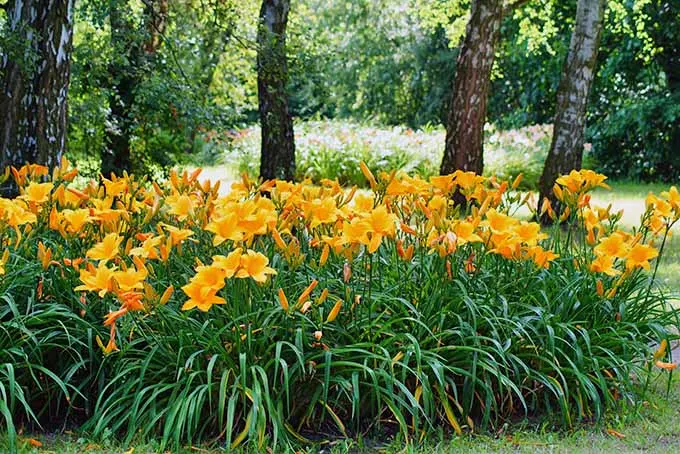
Daylilies require minimal watering and can tolerate drought conditions once established.
They also require little to no pruning, making them a great choice for those who want a beautiful garden without all the fuss.
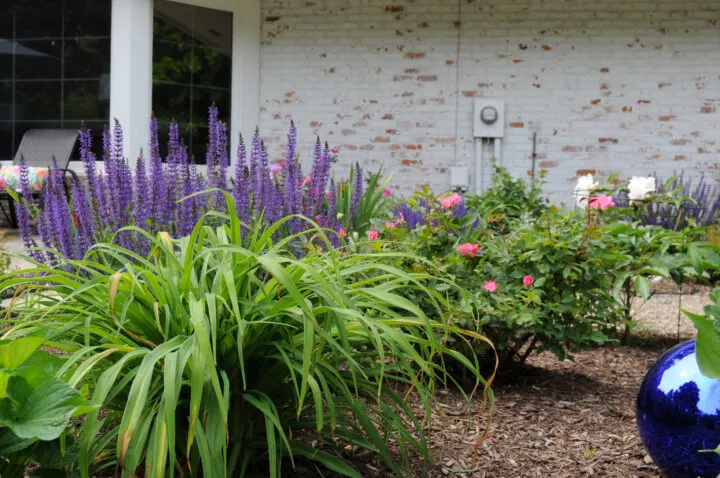
The best time to split this hardy perennial is in the early spring. I had clumps of daylilies growing in our backyard, so I took a spade shovel and split the plant in half, and then dug out the remaining root ball.
I transferred the daylilies to their new location and they held up beautifully.
4 | Iris
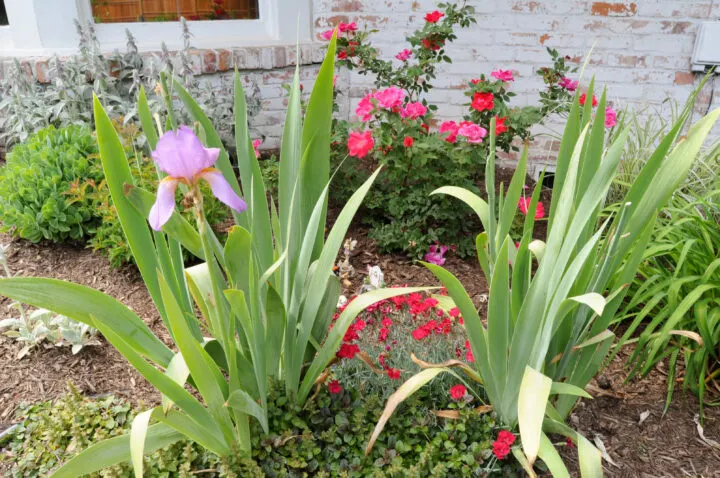
The iris is a tubular root plant that can easily be split and transplanted to other locations. Using a spade shovel, dig up a single flower or group of flowers and break them from the tubular root.
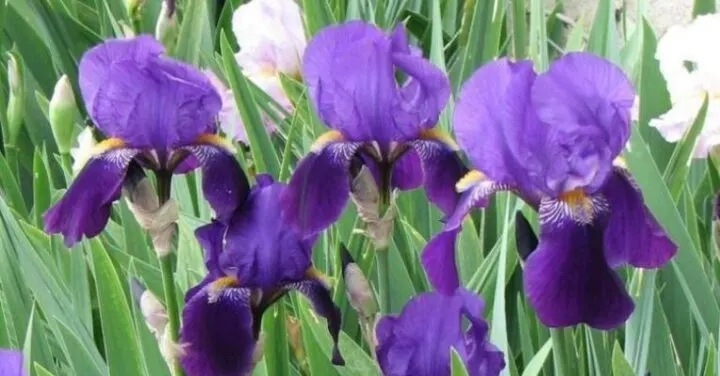
Replant the iris in a location with a good amount of sun. If you are planting more than one, space them at least 18 inches apart for best results.
5 | Rose Bush
A rose bush can easily hold up if you decide to move its location. In our new yard, we had two rose bushes that flanked the gate of our fence. The gate is right by our pool and I really disliked the kids running past them in their swimsuits.
I transplanted both bushes to my English garden and they are continuing to grow well. It is best to transplant rose bushes in the early spring.
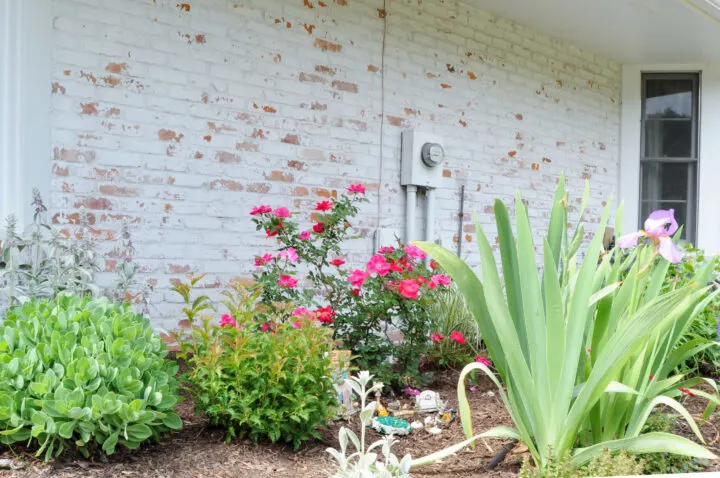
Cut back all of the old stems and dig a large hole around the bush.
You want to take as much of the roots with the plant as you can. In the new location, dig a hole that is 2x as wide as the size of the root ball and place the bush in the hole. Fill the hole with dirt & water well.
6 | Sedum
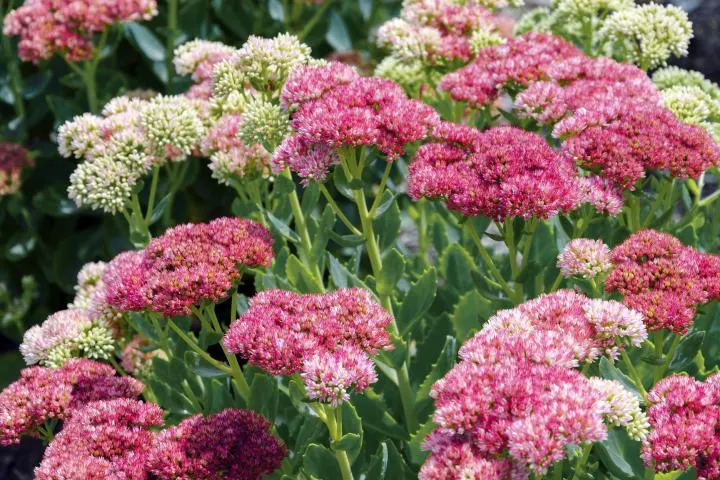
Sedum is a low maintenance perennial that is perfect for any garden. It comes from the succulent family and can either be low to the ground or upright plants.
Like most plants, the best time to divide and transfer sedum is in the early spring. I
added this upright plant to my cottage garden where the stems will flower this summer. Sedum is also a great choice for attracting pollinators like bees and butterflies to your garden.
7 | Peony Bush
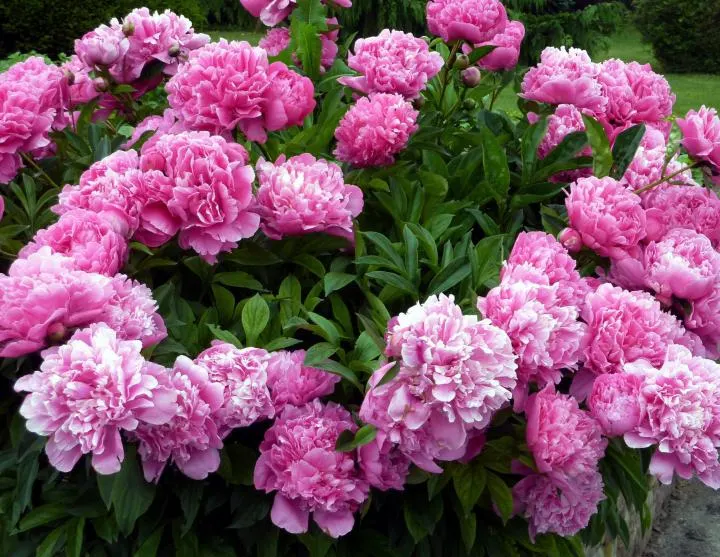
Peonies are one of my favorite flowering bushes. Peonies are a classic perennial that is known for their large, showy blooms in shades of pink, white, and red. They are also incredibly low maintenance, requiring only occasional watering and fertilizing.
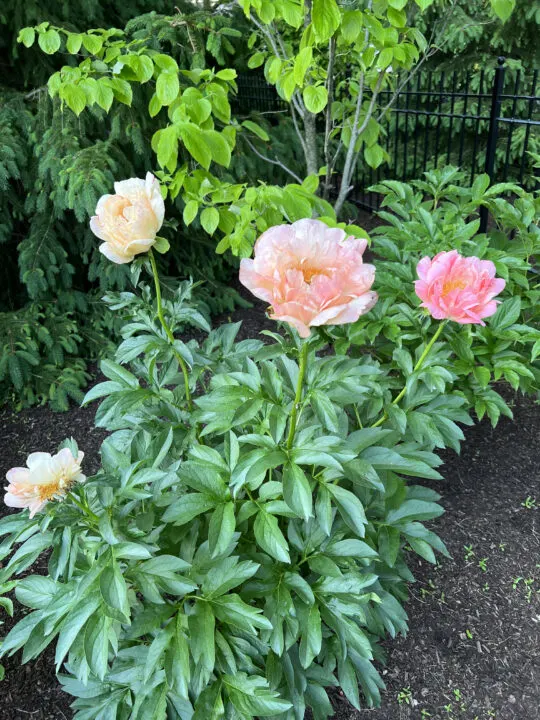
Peonies prefer full sun to partial shade and well-draining soil. Once established, they can live for decades and provide beautiful blooms every spring.
The best time to transplant them is in the fall, but I moved mine in the early spring and they seem to be doing just fine.
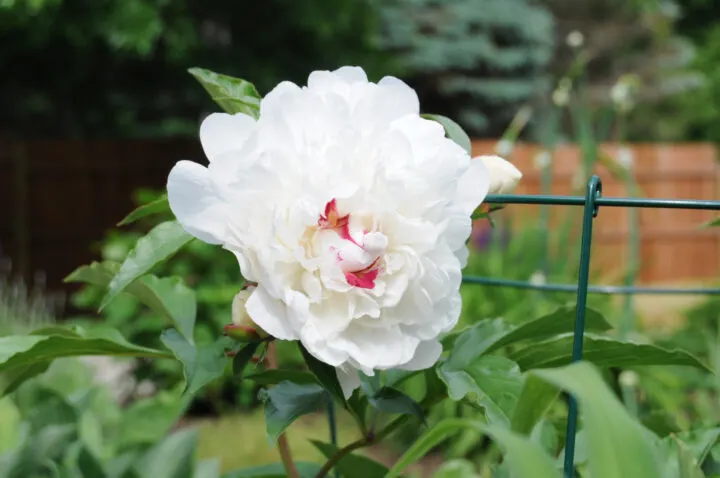
I found a small peony bush growing right next to our AC unit outside and so I dug it up and replanted it in my garden.
Whenever I dig a hole to move a plant, I add a few scoops of compost to make sure the soil has enough nutrients for the new plant.
8 | Lambs Ear
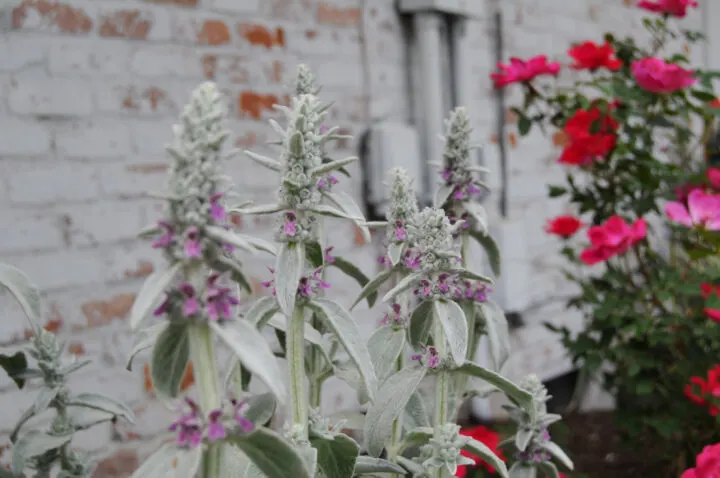
This groundcover plant is another great addition to your garden. It is low maintenance and does not grow very tall.
The beautiful fuzzy, silvery leaf looks nice around the border of your garden so it can be seen.
If you have kids, this is a fun plant to incorporate because they love to touch the soft leaves that feel like a lamb’s ear.
9 | Purple Salvia (Sage)
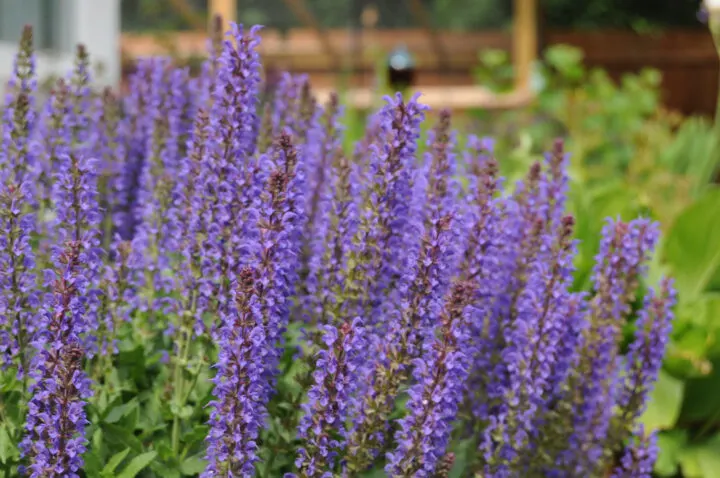
Purple sage is one of my favorite low maintenance perennials in our garden.

They bring height into the garden while also showing off a beautiful pop of purple. This flowering plant borders the pathways throughout our backyard garden.
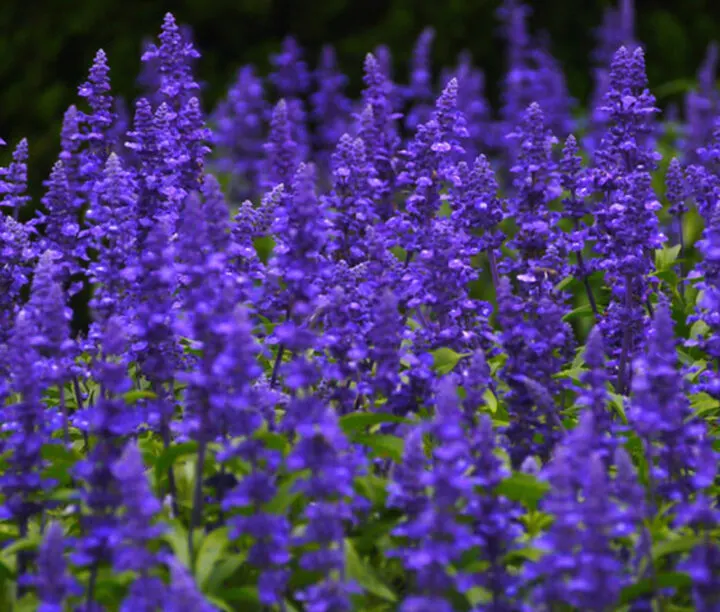
Salvia plants like full sun and bloom in the late spring through the early summer.
10 | Bee Balm

This plant does great in the Ohio climate. It is a good option if you want to create a pollinator garden to attract butterflies, hummingbirds, and bees.
I transplanted a few of these plants in early spring and they have continued to grow and thrive since being transplanted.
11 | Phlox
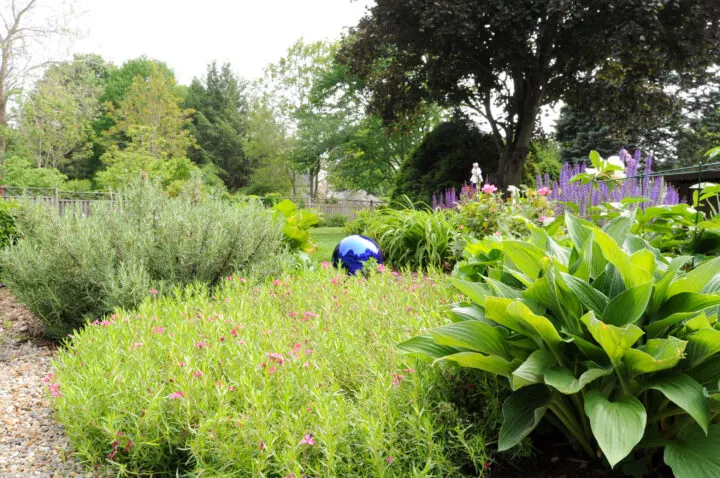
Phlox is a ground cover plant and blooms in different colors. Our garden has a pink flower and it looks so pretty at the edges of the garden.
Tall Perennial Plants for Your Garden
- Hollyhock
- Delphinium
- Black Eyed Susans
- Hydrangea
- Irises
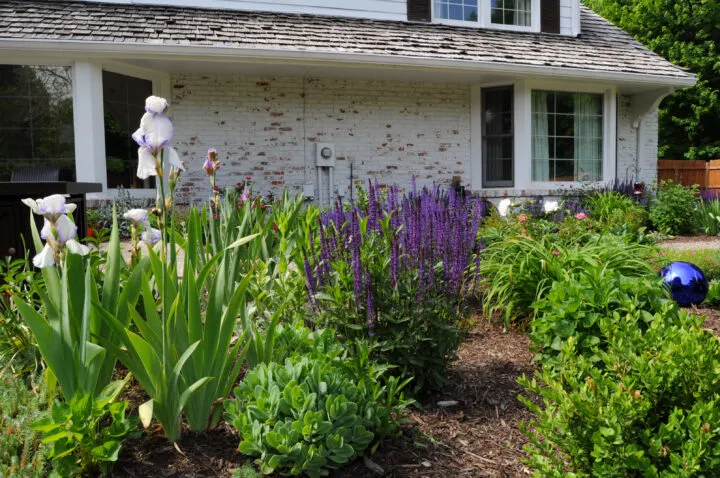
All of the perennials above are native to Ohio that are low maintenance and great for busy or beginner gardeners. As I continue to add native plants to my garden, I am focused on choosing a variety that encourages pollinators to visit.
I hope this list has encouraged you to share your perennial plants with friends and family, too!


